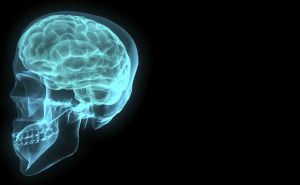The Hemispheric Balance Theory
Jean Robertson and Dirk J. Bakker
The balance theory suggests dyslexia is caused by unusual brain development in either the left or the right hemisphere. It’s interesting as it suggests how the dyslexic brain develops differently from the norm.
It also breaks dyslexia down into three subcategories. These can help you think about your dyslexia in a more specific and individually tailored way.
The most important point of the balance theory is it offers specific methods for stimulating the brain to improve literacy.
Overview of The Balance Theory:
Right! What they’re saying is to learn to read effectively both halves of the brain need to work together properly.
To be able to read fluently you need:
- To visually recognise single letters, groups of letters and words.
- Be building an internal dictionary (a lexicon).
- To understand syntax (knowing the rules of language).
A child starting to read will be mainly using the right (visual) side of the brain to recognise letters groupings and words. When this becomes easier control moves to the left side.
The left (language) side starts mediating reading once the visual foundations have been built by the right side. Also the reader will know most of the syntactical rules by this point. This is the way a normal reader will end up with generally fluent, fast and accurate reading.

Click here for useful dyslexia stuff on ebay.
The theory suggests dyslexia can occur in 3 ways:
- When the shift from right to left hemisphere does not occur (P-types). The learner gets stuck in early style slow fragmented reading. They are referred to as P-type for perceptual dyslexia as they rely on the right side of the brain.
- When the shift from right to left occurs too soon. (L-types) They read quickly but with lots of errors. Visual awareness of the features of the text has not had time to develop on the right side of the brain. They’re called L-type dyslexics (L for attempting to use Linguistic fluency).
- Dyslexia that is a mixture of the two above types (M- types). These learners will read slowly while making lots of errors. (see bottom of page for evidence)
However please don’t think you have to fit perfectly into one of these categories. It is difficult to group dyslexics like this as we don’t fit perfectly into subtypes. Click here to learn more about dyslexic subtypes.
Hemispheric Stimulation Based on the Balance Theory:
Early evidence suggested by stimulating the underperforming hemisphere, you can improve literacy. Now I understand that stimulating one side of the brain may sound a wee bit weird. However the truth is some hemispheric stimulation is actually quite simple to perform.
You can do it using the eyes, ears or hands. The body and brain work together in a cross lateral fashion. This means to stimulate the right side of the brain you would need to use the left hand, eye or ear.
This idea of left and right cross coordination may be related to some physical activities being beneficial for dyslexia. Click here to find out more.
It does not matter which side you stimulate:
There is a lot of experimental evidence which shows the significant improvements subjects make after hemispheric stimulation, (see bottom of page for evidence). However the results of more recent research found it didn’t matter which hemisphere was stimulated in either L or P’s, literacy improvements were still made.
The main point is to only stimulate one hemisphere at a time. By stimulating just one side, it is thought to build concentration and attention.
That being said, who cares why it works. The fact is lots of dyslexic people have shown gains in reading and fluency. The best part of course is some of the stimulation can be done at home for free and I’m going to show you how.
Click here for hemispheric stimulation based on the Balance Theory
Conclusion:
One of the advantages of the balance theory is it suggests how dyslexia occurs in terms of brain development. The categorisation of P, L and M type dyslexics show that different cases of dyslexia need to be treated differently.
It also offers a course of action for stimulating the brain to improve literacy. The methods of stimulation give a slight insight into how the body and brain are coordinated. Click here to find out about more possible causes of dyslexia.
Return from The Balance Theory to Home Page.
Evidence for The Balance Theory:
The Balance Model of Dyslexia and Remedial Training An Evaluative Study .
Neuropsychological Intervention in Dyslexia: Two Studies on British Pupils .
Effects of visual hemisphere-specific stimulation versus reading-focused training in dyslexic children. .
Hemispheric, attentional, and processing speed factors in the treatment of developmental dyslexia.